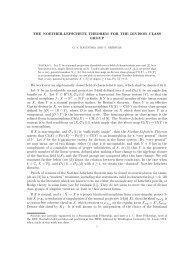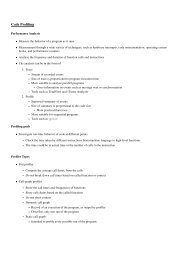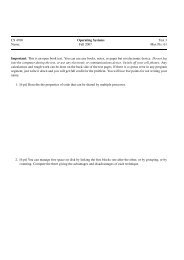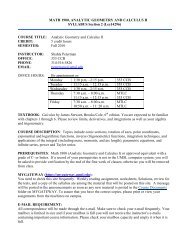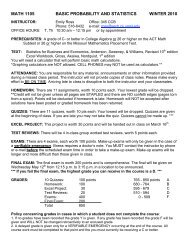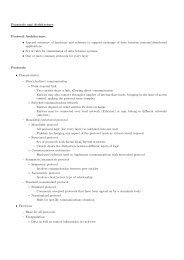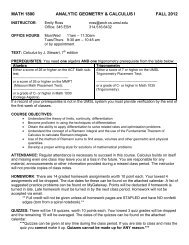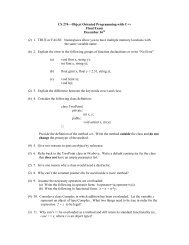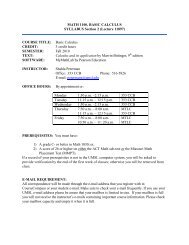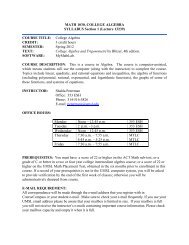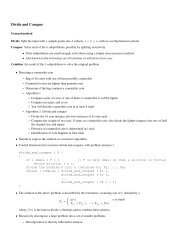Parallel Algorithm Design
Parallel Algorithm Design
Parallel Algorithm Design
Create successful ePaper yourself
Turn your PDF publications into a flip-book with our unique Google optimized e-Paper software.
<strong>Parallel</strong> <strong>Algorithm</strong> <strong>Design</strong> 8• Finite difference method– Stores temperatures in a 2D matrix– Each row contains temperature distribution of the rod at some point– Rod divided into n sections of length h, n + 1 elements in each row– Time from 0 to T divided into m discrete entities of length k; m + 1 rows in the matrix– Initial temperature distribution along the length of rod represented by points in bottom row (known values)– Temperature at the ends of rod represented by left and right edges of grid (known values)– u i,j represents the temperature of rod at point i at time j– u i,j+1 is computed by• Partitioningwhere r = k/h 2– One data item per grid pointu i,j+1 = ru i−1,j + (1 − 2r)u i,j + ru i+1,j– Associate one primitive task with each grid point, leading to 2D domain decomposition• Communication– Draw channels between tasks to show the dependence– Task u i,j+1 requires values of u i−1,j , u i,j , and u i+1,j– Each task has three incoming channels and three outgoing channels• Agglomeration and mapping– Later tasks depend on earlier tasks; vertical paths from bottom to top– Agglomerate all tasks associated with each point in the rod– Task/channel graph reduced to a single row; much simpler∗ Linear array of tasks, each communicating solely with its neighbors– The number of tasks is static and the communication pattern between them is regular; each task performs the samecomputation∗ Create one task per processor∗ Agglomerate primitive tasks to balance computational workload and minimize communication



